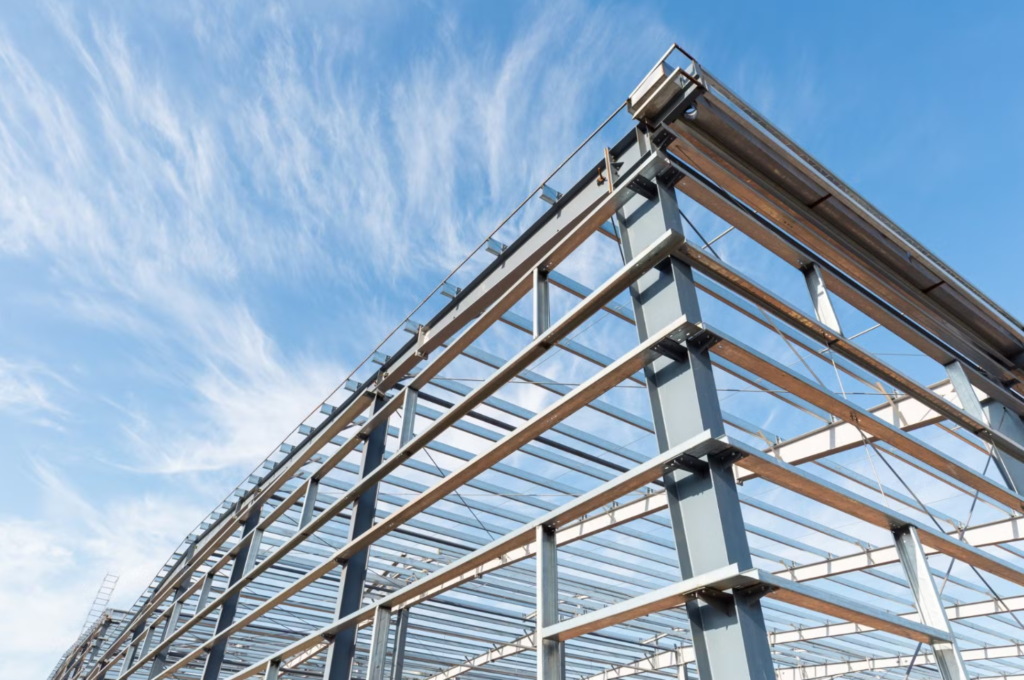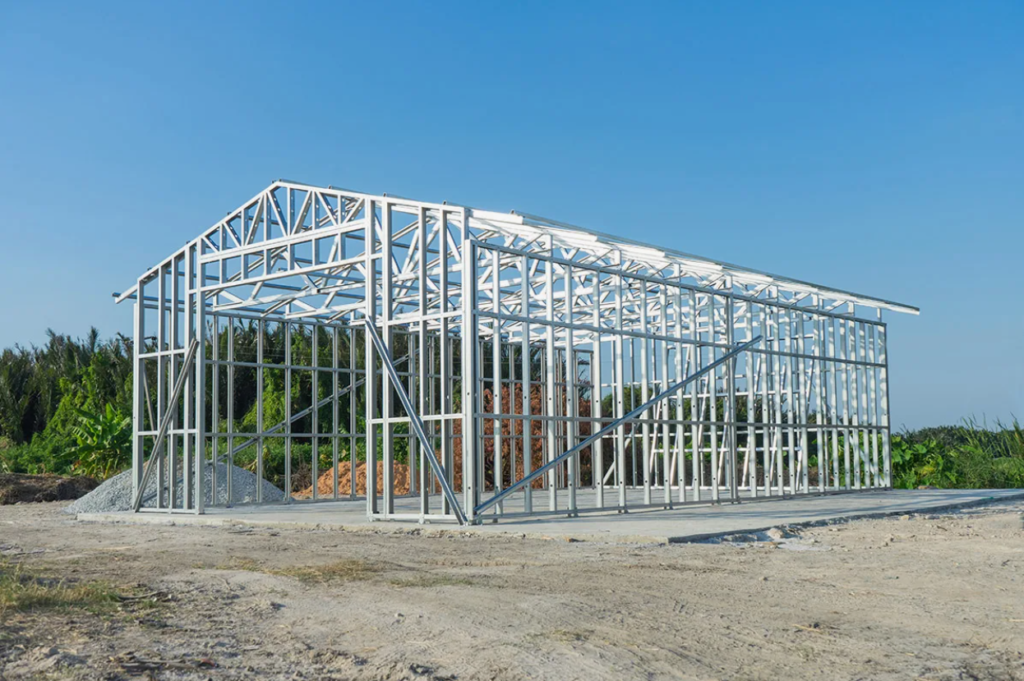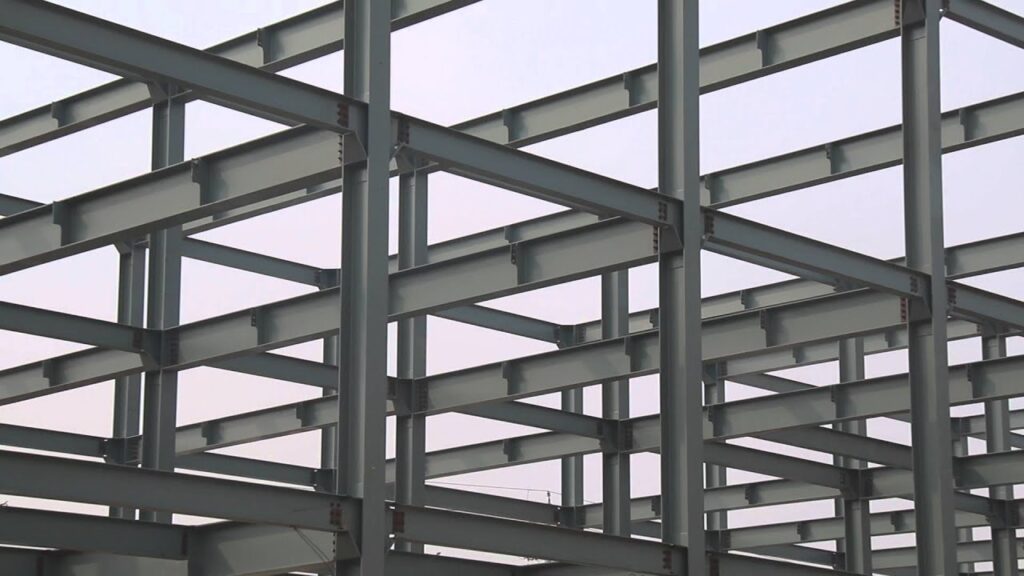Steel structure frame has become a important element in modern construction. This is particularly evident in commercial or public buildings such as factories, warehouses, airports, and stadiums.
The rise of steel structures reflects advances in engineering and material science. More builders now favor steel structure building because of its strength, flexibility, and sustainability.
Compared with concrete and wood, steel provides higher load capacity and longer service life. It supports both small-scale buildings and large architectural projects. The combination of efficiency, precision, and design freedom makes steel structure frames essential in today’s construction industry.
Main Characteristics of Steel Structure Frames
A steel structure frame consists of beams, columns, and connecting members. These parts form a rigid system that supports the building’s load. One key feature of steel is its high strength-to-weight ratio. This means a structure can bear heavy loads without excessive material use. It allows architects to design tall and wide spaces with fewer internal supports.
Steel also offers high ductility. When exposed to heavy forces, steel bends before it breaks. This property improves safety during earthquakes and strong winds. Its uniform quality ensures predictable performance under stress. Unlike natural materials, steel does not have hidden weak spots.
Precision is another major feature. Steel components are fabricated in factories using automated equipment. Each part is cut, welded, and drilled with strict accuracy. This ensures a perfect fit during on-site assembly. Prefabrication reduces waste and shortens the construction period.
Steel`s recyclability adds to its appeal. Old steel can be melted and reused without losing strength. This supports sustainable development and reduces resource consumption. As environmental awareness grows, the recyclability of steel becomes more valuable in construction planning.

Advantages of Steel Structure Frames
The first major advantage of steel structures is strength. Steel can support large loads and resist deformation. This allows designers to create large open spaces without interior columns. Factories, warehouses, and stadiums benefit from this open design.
Another advantage is speed. Because components are made in factories, construction on site moves faster. Workers only need to assemble the prefabricated parts. This reduces labor costs and minimizes weather delays. Projects can finish sooner and start generating value earlier.
Durability also makes steel an attractive choice. It resists pests, mold, and decay that often damage wood. When properly coated, steel can resist rust and corrosion for decades. With minimal maintenance, steel structures can last over fifty years.
Design flexibility is another key benefit. Steel can be shaped into various forms and sizes. Engineers can create complex curves and unique angles that would be difficult with concrete. This makes steel ideal for modern architectural styles.
In addition, steel frames offer easy modification. When expansion or renovation is needed, workers can cut and weld steel components easily. This adaptability reduces long-term costs and improves building usability.
Lastly, steel structures enhance safety. Their strength and ductility protect buildings against earthquakes and strong winds. Fire-resistant coatings can further improve safety levels. This combination of structural stability and resilience gives steel frames a strong reputation for reliability.

How to produce good steel structure frame?
Manufacturing steel structure frames requires precision and strict control. Small errors can lead to large structural problems. Therefore, quality management must be a top priority.
The first aspect is material selection. Not all steel grades suit every project. Engineers must choose the right type based on load requirements, climate, and corrosion risk. High-strength steel may be ideal for tall buildings, while mild steel suits smaller structures.
Welding quality is another crucial factor. Poor welding weakens connections and reduces safety. Skilled welders and modern machines should be used. Each weld must be inspected for cracks, porosity, or misalignment. Non-destructive testing methods, such as ultrasonic inspection, help ensure joint integrity.
Dimensional accuracy also matters. Every beam and column must match the design drawings. Automated cutting and drilling equipment helps maintain precision. If dimensions deviate, assembly on site becomes difficult. It can cause gaps, stress concentration, and even structural failure.
Surface treatment is essential for durability. Steel must be protected against corrosion through galvanizing, painting, or powder coating. The choice depends on the environment. Coastal and humid areas require stronger anti-corrosion protection. Regular inspection and maintenance can extend the life of these coatings.
Bolt connections deserve attention too. Bolts should meet strength standards and be properly tightened. Incorrect torque can loosen joints and reduce stability. Using high-strength bolts and proper installation tools prevents such risks.
Safety in the factory must not be ignored. Workers deal with heavy materials, cutting tools, and welding heat. Strict safety rules and protective equipment prevent accidents. Proper ventilation reduces exposure to welding fumes. A clean and organized workspace supports both safety and quality.

Finally, documentation and traceability are important. Each component should have a production record, including steel grade, batch number, and inspection results. This ensures accountability and helps identify issues if defects appear later.
In summary
Steel structure frames combine strength, efficiency, and flexibility. They allow modern buildings to reach new heights and shapes. Their key characteristics—high strength, ductility, and recyclability—make them one of the most reliable materials in construction.
The advantages extend beyond structure. Faster installation, lower maintenance, and easy modification give steel a strong economic edge. Architects value the design freedom it offers. Builders appreciate its precision and speed. Owners benefit from its long lifespan and low upkeep cost.
However, success depends on careful manufacturing. Every step—from material selection to welding and coating—affects the final quality. Precision and quality control ensure that the frame performs safely and efficiently. Ignoring small details can lead to costly failures.
As technology advances, steel structure manufacturing continues to improve.
Automation, 3D modeling, and smart welding systems make production faster and more accurate. The combination of engineering innovation and sustainable practices will further strengthen steel’s role in construction.
Steel structure frames represent both modern efficiency and long-term reliability. They stand as a symbol of progress in building technology. With proper design and careful production, they will continue to shape the skylines of the future.
Post time: Oct-23-2025

